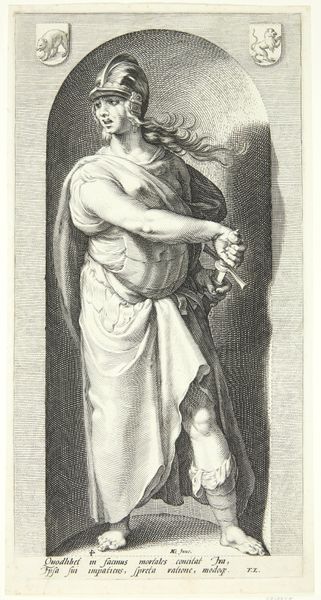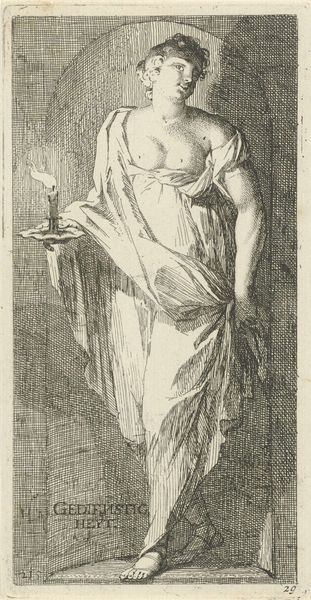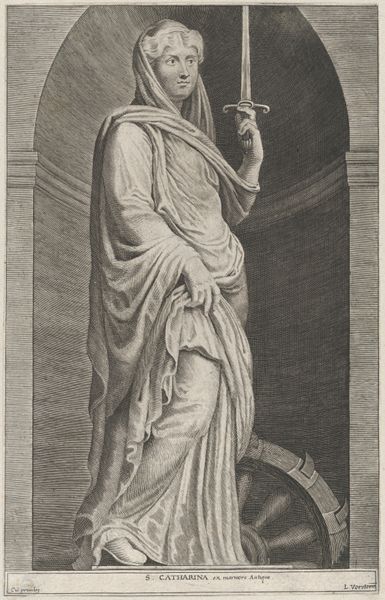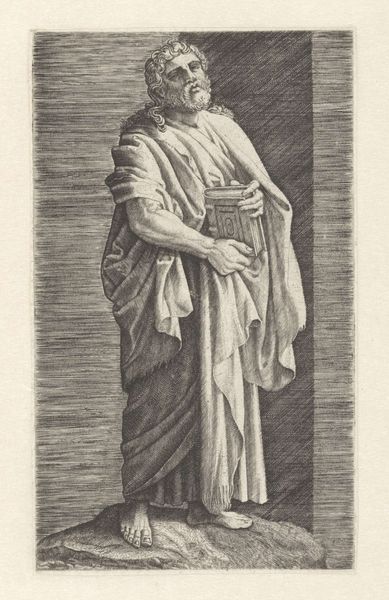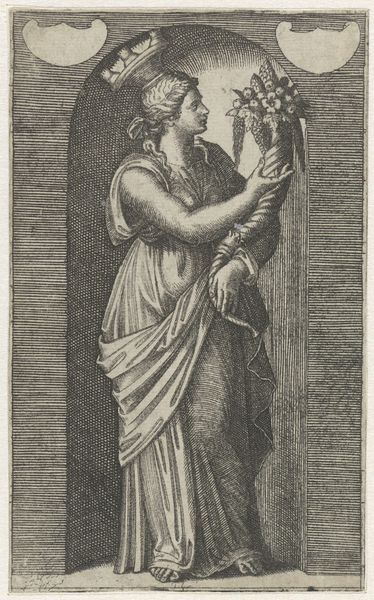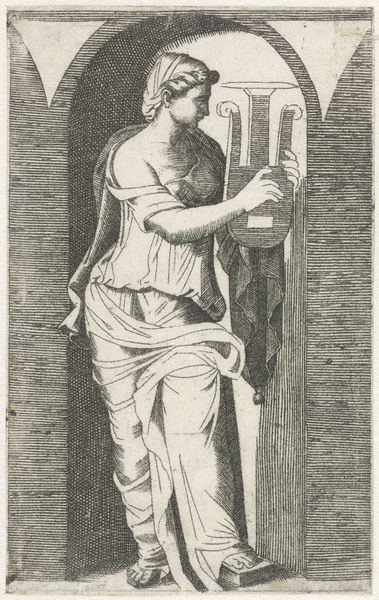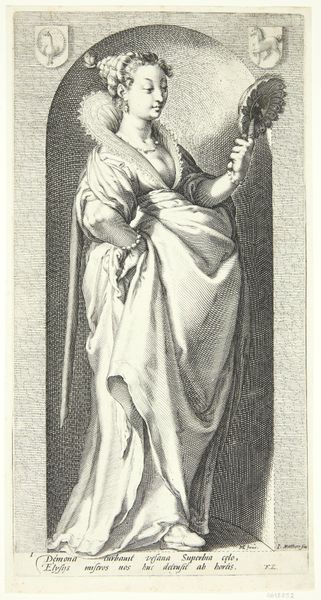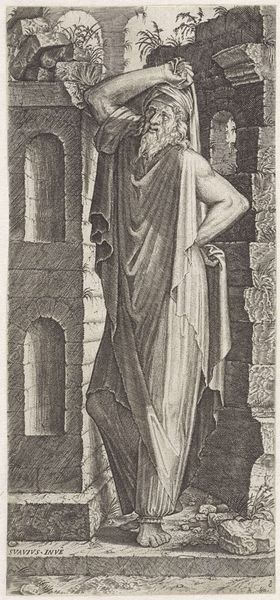
St. Simon standing before an open book with the fingers of his left hand pressed onto the pages, his chin resting in his right hand, a shallow barrel vault with oculus beyond, from "Christ and the Twelve Apostles" 1545
0:00
0:00
drawing, print, paper, engraving
#
portrait
#
drawing
# print
#
paper
#
history-painting
#
northern-renaissance
#
engraving
Dimensions: sheet: 7 3/4 x 3 9/16 in. (19.7 x 9 cm)
Copyright: Public Domain
Curator: Before us, we see Lambert Suavius’ engraving, "St. Simon standing before an open book with the fingers of his left hand pressed onto the pages, his chin resting in his right hand, a shallow barrel vault with oculus beyond," dating to 1545. What are your first impressions of this representation? Editor: The image certainly evokes contemplation and perhaps even melancholy. Simon's pose, supported by the book and hand, conveys a weight, a burden of thought. The monochromatic print imbues it with somber dignity. Curator: It’s a powerful portrayal. Simon, here depicted as one of the twelve apostles, appears to be absorbed by the sacred texts, almost physically weighed down. The light falling through the oculus, symbolically the divine eye, illuminates his face. Editor: Exactly, this resonates with the Reformation context of the era. Individuals grappling with scripture, forming personal interpretations, questioning established doctrines—Simon embodies that struggle, made strikingly apparent in this solitary moment. Curator: Consider also, the book. The focused attention placed on the written word itself becomes a potent symbol. His direct, intimate engagement mirrors the shifting spiritual landscape in the 16th century where literacy and biblical engagement redefined devotion. Editor: The historical symbolism here is significant. The open book also reflects a subtle challenge to prescribed religious interpretations. St. Simon isn’t merely revering scripture; he’s wrestling with it, potentially dissenting from its established meanings. Curator: Intriguingly, Suavius opted for the more intimate medium of engraving, and by depicting him standing under the architectural opening, we may see Suavius reminding us that while doctrine is significant, a saint should engage critically with this written information. It is no simple thing to take up this work. Editor: And how radical of Suavius to give us a Simon of raw, relatable, even troubled faith! By resisting idealized depictions, Suavius positions St. Simon within the larger disruptions to authority unfolding during his own lifetime. Curator: It allows us to contemplate not simply St. Simon and what came to pass in his ministry, but rather consider the ways we continue to find knowledge and direction today. Editor: Right. Seeing the doubts etched on his face encourages all viewers across time to interrogate the narratives we encounter, both then and now. It feels very aligned with Suavius’ intent to urge reflection.
Comments
No comments
Be the first to comment and join the conversation on the ultimate creative platform.

